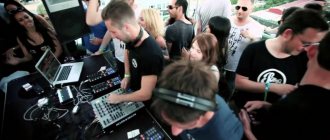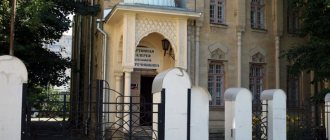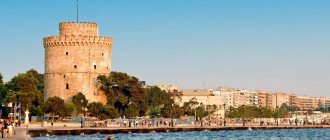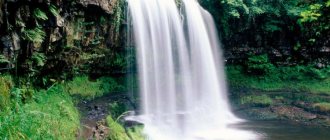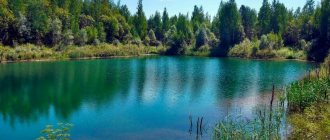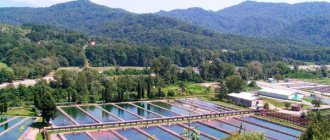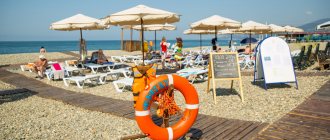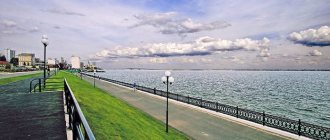The lands of the Stavropol Territory have been inhabited since ancient times. This is indicated by archaeological finds from the Paleolithic era to the Middle Ages and older. The region was popular even during the times of kings and emperors, since every secular person sought to relax surrounded by a mountain landscape and improve their health at healing springs.
The beauty of the sunny region won the heart of the poet Alexander Sergeevich Pushkin. In his letters and notes, Pushkin tried to convey his feelings and every detail of the Stavropol region. Inspired, Alexander Sergeevich writes a new work, “Prisoner of the Caucasus.”
The life of Mikhail Yuryevich Lermontov is also connected with the Stavropol Territory. For the first time, as a child, Lermontov was here with his grandmother. During the second trip, he even composed a naive declaration of love for the “southern mountains.” Mikhail Yuryevich finds the prototype of one of the characters in the story “A Hero of Our Time,” and under the influence of the stories of veterans of the Patriotic War of 1812, he writes his most famous work, “Borodino.”
Geography
Located in the central part of the Ciscaucasia and on the northern slope of the Greater Caucasus. The Stavropol Territory stretches for 285 km from north to south and 370 km from west to east. The area is larger than, for example, the Netherlands.
In the west and southwest, the Stavropol Territory borders with the Krasnodar Territory, in the northwest with the Rostov Region, in the north and northeast with Kalmykia, in the east with Dagestan, in the southeast with the Chechen Republic, in the south with North Ossetia-Alania , Karachay-Cherkess and Kabardino-Balkarian republics.
Relief, geology and minerals
Most of the territory of the Stavropol Territory is occupied by the Stavropol Upland, which passes in the east into the Terek-Kuma Lowland (Nogai steppe). In the north, the elevation merges with the Kuma-Manych depression. In the foothills zone, the Caucasian Mineral Waters region stands out with laccolithic mountains up to 1401 m high (Beshtau).
Minerals - natural gas, oil, polymetals containing uranium, building materials. The most famous fields: gas - North-Stavropol-Pelagiadinskoye (reserves about 229 billion m³) and Sengileevskoye; gas condensate - Mirnenskoye and Rashevatskoye; oil - Praskoveyskoe.
The potential of the region's geothermal waters is high; four large deposits have been explored: Kazminskoye, Georgievskoye, Tersko-Galyugaevskoye and Nizhne-Zelenchukskoye with a total flow rate of 12 thousand m³/day.
Reserves of construction raw materials at the end of the 1990s: clays for the production of bricks and tiles - 90 million m³, expanded clay - 12 million m³, silicate products - 125 million m³, sand and gravel materials - 290 million m³, building stone - 170 million m³, glass — 4.6 million tons.
The region’s special wealth is its medicinal mineral waters. In the 2000s, about 1370 m³/day is used, which is only 10% of the potential.
Climate
The climate is temperate continental. The average January temperature is −5 °C (in the mountains up to −10 °C), July from +22…+25 °C (in the mountains up to +14 °C). Precipitation falls: on the plains 300-500 mm per year, in the foothills - over 600 mm. The duration of the growing season is 180-185 days. There are 13 meteorological stations of Roshydromet in the region.
Hydrography
The main rivers are the Kuban, Kuma, Malka, Podkumok, Zolka, Kalaus, Yegorlyk, Bolshoy Zelenchuk, Kura, Manych and others. The lakes are few: Tambukan Lake (with reserves of therapeutic mud), part of Lake Manych-Gudilo, Lake Tsagan-Khak, Sengileevskoye reservoir, Kravtsovo lake, etc.
The rivers and waste canals of the region have significant energy potential, realized in the 2000s in the amount of up to 750 million kWh/year
Soils
The Stavropol Territory is located mainly in steppe and semi-desert zones. The soils are mainly chernozems (southern and ordinary) and chestnut (light chestnut, chestnut and dark chestnut). Forb-grass and cereal steppes predominate; in the east and northeast there is wormwood-grass vegetation with solonetzes and salt marshes. The steppes are mostly plowed.
Animal and plant life
In the high areas of the Stavropol Upland there are tracts of broad-leaved oak and hornbeam forests (forest-steppe areas). The steppe is inhabited by rodents (gophers, voles, hamsters, jerboas, etc.), and there are long-eared hedgehogs, weasels, foxes, and wolves. In the Kuma floodplains there are reed cats and wild boars. There are many waterfowl on the lakes and swamps.
State natural monuments of regional significance
On September 15, 1961, a resolution was adopted to assign the status of a state natural monument of regional significance to: the Oak Forest on the Prikalaus Heights, the Stone Sheds cave, the Semistozhki tract, the beech forest on the Vorovskolesski Heights (Chumatsky Forest), the St. George sand quarry, Ptichye Lake, the valley of the Kuban River near the village of Barsukovskaya, the Belomechetsky sand quarry, the Karmalinovsky sand quarry, the Batalinsky mineral spring, the Batalinsky cave, areas of yew berry in the Bekeshevsky and Borgustansky forest districts, the “Battleship” and “Destroyer” rocks, the beech area on Mount Strizhament, the Lopatinsky forest dacha, Kamenny chaos on the northern slope of Mount Strizhament, a strip of rocks and slid blocks of Central Sarmatian limestone in the upper reaches of the Tatarka gully, the Fourth gully, the Kosyakinsky sand quarry, the Lermontov rock, the Lermontov waterfall, the group of rocks “Red Stones”, “Ring Mountain”, the Pyatigorsk Great Failure, the mountains : Mashuk, Dubrovka (Shaved), Beshtau, Sharp, Dull, Honey, Iron, Razvalka, Kryk, Kutsay, Camel, Dagger, Kokurtly, Snake, Bald, Golden Mound, Jutsa, Bull, Yutsa, Mangy.
Wildlife sanctuaries
On August 17, 2001, state natural reserves of regional significance were formed: “Alexandrovsky”, “Arzgirsky”, “Debri”, “Lesnaya Dacha”, “Beshtaugorsky”, “Vostochny”, “Novoselitsky”, “Priozerny”.
Religious sites
Second Athos Monastery
Coordinates: 44.089729⁰N, 43.011976⁰E Address: Pyatigorsk, Mount Beshtau Telephone: Website: https://afon-beshtau.ru/ Opening hours: 06:00 – 18:00 Tue-Sun How to get there: from the city of Lermontov, along the Ring Road Beshtau, go around the mountain range along an asphalt path
The monastery was founded in 1904 by monks, Father Sergius and Father John, who were natives of Athos, which explains the name of the temple. They wanted to find the most suitable place for a religious monastery. The paths of the monks diverged: one was looking for a place, and the other was looking for means for construction. Thanks to their work, a monastery arose.
Now on the territory of the Holy Dormition Second Athos Monastery there is a bakery, a bee apiary, a fraternal building, a chapel and open-air icons.
Church of All Saints
Coordinates: 45.132071, 42.035784 Address: Mikhailovsk, st. Oktyabrskaya, 367 Phone: 8 (86553) 5-11-00 Website: https://mihajlovsk.cerkov.ru/ Opening hours: 07:00 – 18:00 Mon-Sun
The Church of All Saints was built around 1988 and is a provincial church where they will listen to you, light a candle and pray for your loved ones.
Church of St. Nicholas the Wonderworker
Coordinates: 45.803769, 41.886522 Address: Dmitrievskoye village, st. Gal, 81 Website: https://dmitrievsk-hram.cerkov.ru/
The Church of St. Nicholas the Wonderworker was built in 1864 in the center of the village. Construction was carried out at the expense of local residents. Most of the icons in the temple are a gift from the villagers. Inside, under the dome, you can see a luxurious chandelier.
If you have not yet chosen where you will live and want to save money when booking, we recommend using the RoomGuru service. Firstly, it contains hotels, apartments and guest houses from many different booking systems, so you won’t miss out on a worthwhile option. Secondly, you can immediately compare prices for one place in different services and book where it is cheaper (this is not always Booking!).
Story
On December 15, 1936, after the Dagestan Autonomous Soviet Socialist Republic was separated from the North Caucasus Territory and the Kabardino-Balkarian, North Ossetian and Chechen-Ingush Autonomous Regions were transformed into the Autonomous Soviet Socialist Republic, the center of the region was transferred to the city of Voroshilovsk, and the territory of the region approached the borders of the modern Stavropol Territory.
On March 13, 1937, after the death of Sergo Ordzhonikidze, to perpetuate the memory of the revolutionary, the North Caucasus region was renamed Ordzhonikidze.
On February 22, 1938, five northern districts of the Dagestan Autonomous Soviet Socialist Republic (Achikulaksky, Karanogaysky, Kayasulinsky, Kizlyarsky, Shelkovsky) were transferred to the region. Of these, the Kizlyar Autonomous Okrug was formed with its center in the city of Kizlyar. Thus, the region began to include 2 autonomous regions (Karachay and Cherkessk), 1 district, 39 districts and 8 cities of regional subordination.
On January 12, 1943, by Decree of the Presidium of the Supreme Soviet of the USSR, the administrative center of the region, the city of Voroshilovsk, was renamed Stavropol, and the Ordzhonikidze region was renamed Stavropol.
On October 12, 1943, the Karachay Autonomous Region was liquidated.
On December 27, 1943, the Priyutnensky district was transferred from the abolished Kalmyk Autonomous Soviet Socialist Republic.
On March 22, 1944, after the abolition of the Chechen-Ingush Autonomous Soviet Socialist Republic, the Grozny region was formed, which included all the districts of the liquidated Kizlyar district.
On January 14, 1952, the Stepnovsky district was transferred to the Stavropol Territory from the Astrakhan Region and renamed Stepnoy.
On March 14, 1955, by the Decree of the Presidium of the USSR Armed Forces, the Klukhorsky district was transferred to the region from the Georgian SSR.
On January 12, 1957, the Kalmyk Autonomous Region, to which the Stepnoy and Chernozemelsky districts were transferred, and the Karachay-Cherkess Autonomous Region, to which the Zelenchuksky, Karachaevsky and Ust-Dzhegutinsky districts were transferred, were formed as part of the Stavropol Territory.
On July 19, 1958, the Kalmyk Autonomous Region was transformed into the Kalmyk Autonomous Soviet Socialist Republic and separated from the Stavropol Territory.
On January 12, 1965, the Presidium of the Supreme Soviet of the RSFSR decided:
- create districts: Neftekumsk district - the center is the working village of Neftekumsk; Predgorny - center village Essentukskaya
- abolish the Neftekumsky industrial district
- Arzgirsky, Alexandrovsky, Apanasenkovsky, Blagodarnensky, Georgievsky districts, Izobilnensky, Ipatovsky, Kochubeevsky, Krasnogvardeysky, Kursk districts, Levokumsky, Mineralovodsky, Novoaleksandrovsky districts, Petrovsky districts, Prikumsky, Sovetsky and Shpakovsky rural areas should be transformed into districts.
On July 3, 1991, the Karachay-Cherkess Autonomous Region seceded from the Stavropol Territory and was transformed into the Karachay-Cherkess Soviet Socialist Republic.
Region infrastructure
All resorts in the Stavropol Territory are located in the foothills and mountain areas of the Central Caucasus massif. More precisely, in the area of outliers under the general name Pyatigorye, as well as on the rise to the Pastbishchny and Skalisty ridges of the Main Caucasus.
Resort cities of the Stavropol Territory are listed in the following section. But the resort area also includes surrounding areas, in which there are health centers based on the beneficial effects of radon water, as well as protected skiing, hiking and horse riding areas. And they help our health. The entire area is a climatic “health resort” - thanks to the unusually fresh (alpine) air, saturated with the aroma of dozens of useful plants.
Science, education and culture
Scientific institutions
- Stavropol Scientific Research Institute of Agriculture
- North Caucasus Research Institute of Natural Gases
- Research Institute for Integrated Use of Dairy Raw Materials
Higher education
- North Caucasus Federal University
- Nevinnomyssk Institute of Economics, Management and Law
- Stavropol State Agrarian University
- Stavropol State Medical University
- Stavropol Institute of Management
- Institute of Friendship of the Peoples of the Caucasus
- Stavropol Commercial Social Institute
- Stavropol Institute of Service
- Pyatigorsk State Linguistic University
- Pyatigorsk Medical and Pharmaceutical Institute
Since April 1, 2010, the Stavropol Territory has been participating in an experiment in teaching the course “Fundamentals of Religious Cultures and Secular Ethics” (includes “Fundamentals of Orthodox Culture”, “Fundamentals of Islamic Culture”, “Fundamentals of Buddhist Culture”, “Fundamentals of Jewish Culture”, “Fundamentals of world religious cultures", and "Fundamentals of secular ethics").
Culture
- North Caucasus State Academic Philharmonic named after V. I. Safonov
- Almanac “Literary Stavropol Region”. The first issue was published on January 28, 1941
Cultural and entertainment facilities
Water park "City of the Sun"
Address: Stavropol Territory, Inozemtsevo village, st. Nikolaevskaya, 2 Phone: Website: https://water-park-65.business.site/ Opening hours: 09:00 – 20:00 Mon-Sun Cost: 1200 rubles – adult ticket, 800 rubles – ticket for children from three years
The City of the Sun water park is one of the most famous in the region. Tourists are provided with a hotel, a restaurant and, of course, the water park itself with various entertainment areas: karaoke, disco club, bowling.
Tersky stud farm
Address: Novotersky village, st. Shkolnaya, 2 Phone: 8 (879) 227-1316 Website: https://terskarabian.com/ru/ Opening hours: 08:00 – 17:00 Mon-Fri, 12:00 – 13:00 – break, Sat, Sun – closed
The Terek breeding stud farm is the largest and most popular enterprise where purebred Arabian horses are raised. It was founded in 1889 by S. A. Stroganov near Mount Snake.
To this day, the stud farm operates according to old traditions. There are also excursions and retreats held here. For example, a show exhibition where visitors can see the best horses. Overnight accommodation is also provided.
Resorts
Caucasian Mineral Waters is the largest resort region of the Russian Federation, which in terms of wealth, diversity, quantity and value of mineral waters and healing mud has no analogues in all of Eurasia. The healing power of the local mineral springs has long been known to the local population. Legends also tell about this, where truth is intricately intertwined with poetic fiction. An echo of such a legend is also contained in the name of one of the popular local mineral waters - Narzan. This word can be translated into Russian as “heroic drink”, “water of heroes”. Narzan was considered the source of power of the Narts, a tribe that once allegedly lived in the North Caucasus.
Leaders of the region
Communist Party
- Konstantin Maksimovich Sergeev (1893-1938) - 1937-1938
- Dmitry Georgievich Goncharov (1906 - unknown) - 1938-1939
- Mikhail Andreevich Suslov (1902-1982) - 1939-1942 and 1943-1944
- Alexander Leonidovich Orlov (1907-1969) - 1944-1946
- Ivan Pavlovich Boytsov (1896-1988) - 1946-1956
- Ivan Kononovich Lebedev (1907-1972) - 1956-1960
- Nikolai Ilyich Belyaev (1903-1966) - 1960-1960
- Fyodor Davydovich Kulakov (1918-1978) - 1960-1964
- Nikolai Vasilievich Bosenko (b. 1918) - 1963-1964
- Leonid Nikolaevich Efremov (1912-2007) - 1964-1970
- Mikhail Sergeevich Gorbachev (b. 1931) - 1970-1978
- Vsevolod Serafimovich Murakhovsky (b. 1926) - 1978-1985
- Ivan Sergeevich Boldyrev (b. 1937) - 1985-1991
Heads of the regional administration
- Evgeny Semyonovich Kuznetsov (1938-2005) - 1991-1995
- Petr Petrovich Marchenko (b. 1948) 1995-1996
Governors
- Alexander Leonidovich Chernogorov (b. 1959) 1996—2008
- Valery Veniaminovich Gaevsky (b. 1958) 2008—2012
- Valery Georgievich Zerenkov (b. 1948) 2012—2013
- Vladimir Vladimirovich Vladimirov (b. 1975) acting governor since 2013, elected governor in 2014
People associated with the region
- Andropov, Yuri Vladimirovich - General Secretary of the CPSU Central Committee
- Afonin, Veniamin Georgievich - Honorary Citizen of the Stavropol Territory
- Bleskov, Alexander Alekseevich - Honorary Citizen of the Stavropol Territory
- Bogachev, Ivan Andreevich - Honorary Citizen of the Stavropol Territory
- Varshavsky, Mikhail Nikolaevich - Honorary Citizen of the Stavropol Territory
- Volodin, Boris Mikhailovich - Honorary Citizen of the Stavropol Territory
- Golodnikov, Nikolai Gerasimovich - Honorary Citizen of the Stavropol Territory
- Gonochenko, Alexey Alekseevich - Honorary Citizen of the Stavropol Territory
- Gorbachev, Mikhail Sergeevich - President of the USSR
- Gorlov, Grigory Kirillovich - Honorary Citizen of the Stavropol Territory
- Grechishkin, Pavel Moiseevich - Honorary Citizen of the Stavropol Territory
- Gubin, Andrey Terentievich (1927-1992) - writer
- Deryabin, Alexander Vladimirovich - Honorary Citizen of the Stavropol Territory
- Treasurer, Viktor Alekseevich - Honorary Citizen of the Stavropol Territory
- Kalyagin, Viktor Vladimirovich - Honorary Citizen of the Stavropol Territory
- Korobeinikov, Anatoly Antonovich - Honorary Citizen of the Stavropol Territory
- Markaryants, Vladimir Surenovich - Honorary Citizen of the Stavropol Territory
- Mikhailenko, Vitaly Ivanovich (1945) - head of the administration of the Caucasian Mineral Waters, Honorary Citizen of the Stavropol Territory.
- Moroz, Vasily Andreevich - Honorary Citizen of the Stavropol Territory
- Murakhovsky, Vsevolod Serafimovich - Honorary Citizen of the Stavropol Territory
- Nekrasov, Vladislav Sergeevich - Honorary Citizen of the Stavropol Territory
- Razin, Andrey Alexandrovich - founder of the group “Tender May”
- Sevryukov, Mikhail Spiridonovich - Honored Artist of Russia.
- Slepakov, Semyon Sergeevich - Russian producer, screenwriter, comedian, bard
- Solzhenitsyn, Alexander Isaevich - writer
- Solovyov, Ivan Ivanovich (1910-1982) - Soviet theater and film actor, director, People's Artist of the USSR (1980)
- Starshikov, Georgy Georgievich - Honorary Citizen of the Stavropol Territory
- Taranov, Ivan Tikhonovich - Honorary Citizen of the Stavropol Territory
- Khurtaev, Georgy Savelyevich - Honorary Citizen of the Stavropol Territory
- Shikunov, Mikhail Ivanovich - Honorary Citizen of the Stavropol Territory
- Shiyanov, Alexander Akimovich - Honorary Citizen of the Stavropol Territory
- Shumsky, Alexander Alekseevich - Honorary Citizen of the Stavropol Territory
